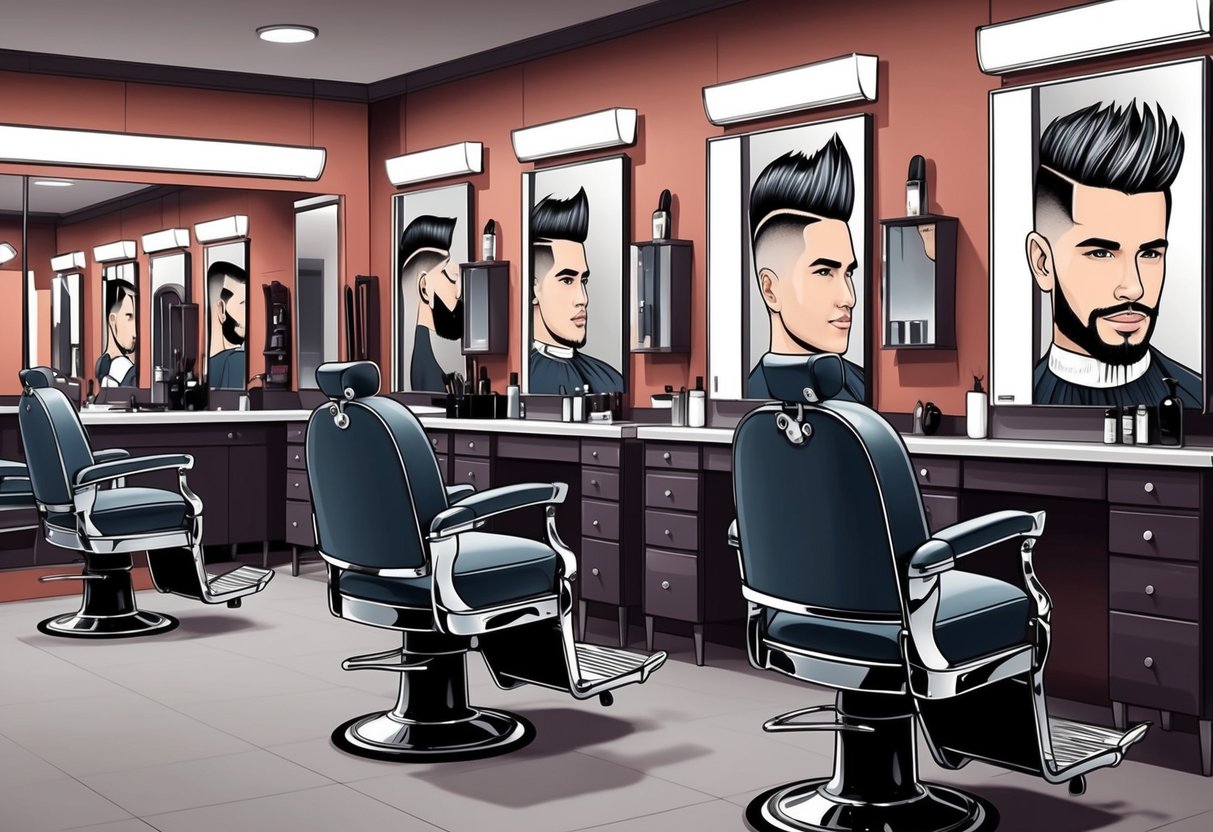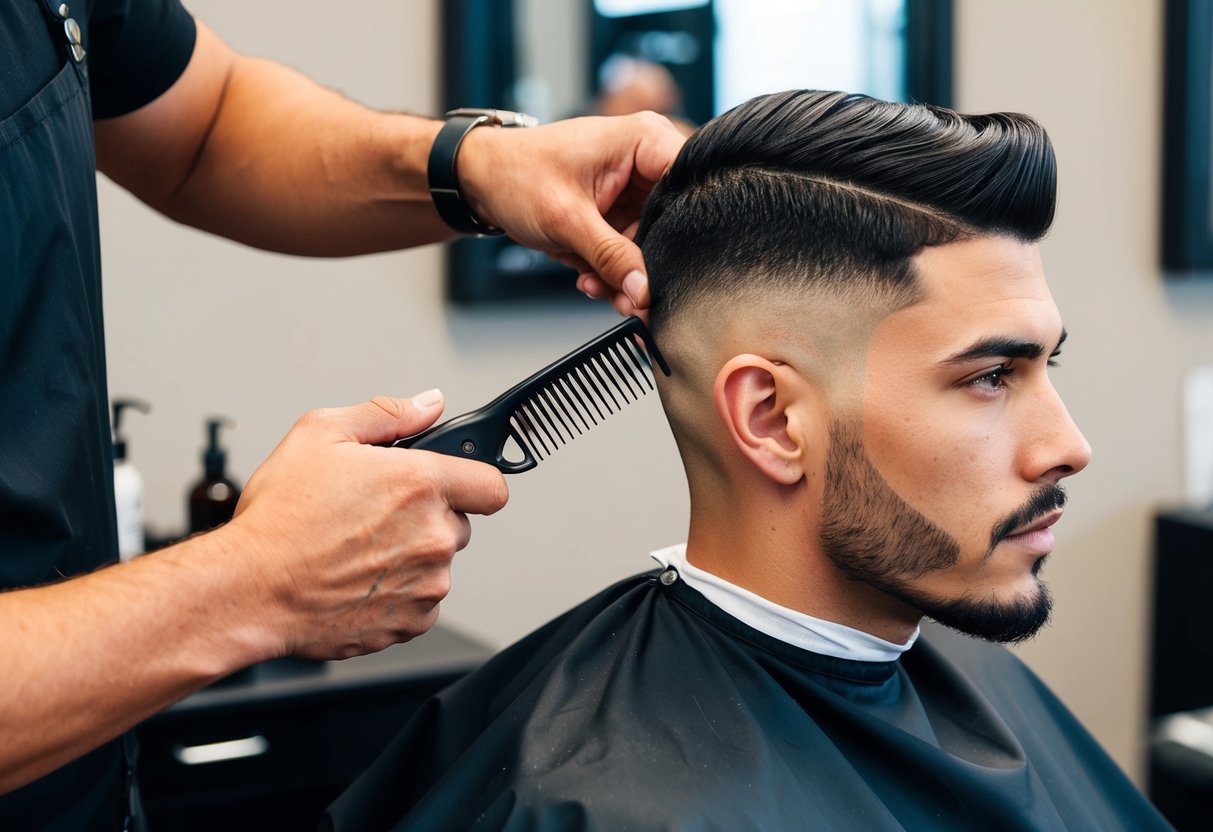
Achieving the Perfect Fade: Barbershop Vs. DIY

Getting a perfect fade depends on both the barber’s skill and understanding the right tools and techniques. The main factors to consider are the quality of the finish, consistency, cost, time, and whether you want professional precision or hands-on learning.
Professional Fade Experiences
A professional barber offers experience and the ability to tailor a haircut to an individual’s hair type, head shape, and style preferences. Most barbers use a combination of high-quality clippers, shears, and blending techniques to deliver a precise, even fade.
A skilled barber knows how to manage tricky areas such as cowlicks, scalp contours, and awkward growth patterns. Barbershops often provide a consultation before the cut.
This helps ensure a fade that not only meets but often exceeds expectations. They can recommend options like a low fade, high fade, or skin fade depending on current trends and personal style.
For those who want consistent results with minimal hassle, going to a professional is often the best choice. For more guidance, visit this guide to finding the perfect men’s haircut.
DIY Fade Tips and Tools
Cutting a fade at home requires a steady hand, patience, and the right equipment. Basic DIY tools include adjustable clippers with multiple guards, a handheld mirror, barber scissors, and a comb.
Using proper sectioning and following a step-by-step approach can lead to cleaner lines and avoid choppy transitions. Beginners should watch video tutorials and use mirrors to check all angles.
Starting with a longer guard and gradually moving to shorter ones minimizes mistakes. Keep the blades clean and always cut against the grain for more even blending.
Although achieving a barbershop-level fade can be challenging at home, practice can improve results. For a detailed breakdown, check out this video explaining fade types and techniques.
Frequently Asked Questions

Choosing the right fade haircut requires understanding the differences between types like low, mid, and high fades. Each style interacts differently with face shape, hair texture, and personal maintenance preferences.
Men with thick or curly hair often require specific advice for maintaining a fade’s clean look. Selecting a style that works with their natural volume is important.
What are the key differences between taper, low, and mid fade haircuts?
A taper fade gradually transitions hair from longer to shorter, typically finishing just above the ears and neckline, creating a subtle blend. In contrast, a low fade starts just above the ears and curves around the hairline, offering a soft, natural look.
Mid fades have the blending point at the middle of the head’s side, providing a sharper contrast while still being versatile for most hairstyles. For a comparison, visit this men’s ultimate guide to fades.
How do I determine the best fade haircut to suit my face shape?
The best fade for any face shape takes into account the jawline, forehead, and overall proportions. Square faces often benefit from softer fades, while round faces can gain structure from a high or mid fade with more volume on top.
Oval faces work well with nearly any fade style, as their balanced proportions are versatile. Specifics on face shape considerations are covered in this guide to choosing fade haircuts.
Can you explain the contrast between high fade and drop fade styles?
A high fade starts well above the temples, resulting in a bolder, more dramatic look with a noticeable transition from short to long hair at the top. A drop fade, by contrast, follows the natural curve of the head, dipping behind the ear for a rounded, more contoured effect.
The drop fade is particularly effective for those seeking definition while retaining length along the crown.
What maintenance is required for keeping a fade haircut looking sharp?
Regular upkeep is necessary, as faded styles quickly lose their shape. This means trimming the faded sections every 2–3 weeks to preserve clean lines and a polished appearance.
Daily styling products can help manage texture and hold, while routine washing keeps the hair and scalp healthy. Find tips for maintaining your cut in this fade maintenance guide.
Which types of fade haircuts are most suitable for thick/curly hair?
Thick and curly hair works especially well with low and mid fades, as these types provide structure without removing too much bulk. A skin fade can highlight curls on top while keeping the sides neat, making styling more manageable.
Taper fades are also a good match, blending dense hair while maintaining a natural flow.
How frequently should a fade haircut be trimmed to maintain its style?
A fade haircut should be trimmed every 2–3 weeks to maintain crisp edges and the blending effect.
Overgrown fades lose their sharp contrast and blending, leading to a more unkempt appearance.



